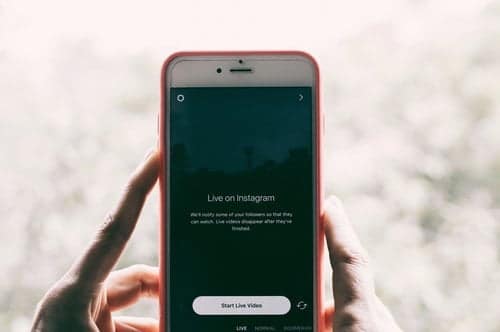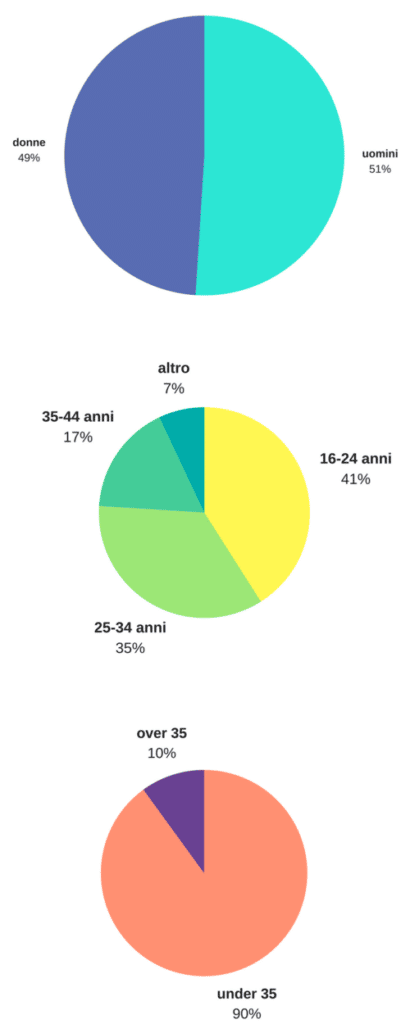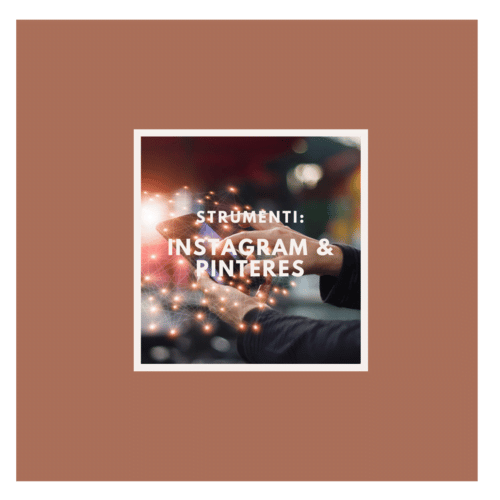We live in a very visual world, where storytelling is done with memes and Instagram Stories, so it is a given that having a visual strategy is of vital importance to a brand.
On social networks, images can work very well even when they do not act as a complementary element to a text.

Instagram and Pinterest
are the most popular social media for images
Instagram, originally created as a mobile app, has recently released a desktop version as well (although its main use continues to be on mobile devices). Conversely, Pinterest, which was born to be used primarily on desktop, has increasingly multiplied its accesses from apps.
Both, however, base all communication on image, and thus allow a brand to define its positioning on the market.
Undisputed protagonists, they can be accompanied by descriptions, links and hashtags, but it is the images that lead the game

has been online since 6 October 2010 and has 300 million monthly active users, of which 90% are under 35 years old. On average, an Instagram user publishes 2.41 posts per day, for a global reach of 70 million photos and videos every day
In order to avoid investing time and energy and getting a lot of likes and no profit in return, it is necessary to set up the work critically:
integrating activity with content from other channels (blogFacebook, YouTube, Online Shop, etc.).
setting precise objectives.
When images are in direct support of other content marketing activities, the different channels must be intelligently integrated, for example:
frames taken from videos to be uploaded on YouTube
previews of new posts
the featured image of the last published post
a teaser of the new video
In this way, traffic can be generated by engaging the reader with more stimuli. When, on the other hand, the objective is more specific and concerns the channel itself, one can:
invite users to use a hashtag and post photos of them wearing your clothes (reaching their circle of contacts in a natural way)
create specific promotions for those using that platform
Aiming at direct engagement of people with dedicated content that gives them a reason to follow the brand on that particular channel.
In practice, efforts should aim at convincing the user to interact directly with the brand's social profile.

has been online since March 2010 and is used by 72.8 million people, of whom 80% are women. On average, the time spent on Pinterest is 98 minutes
Pinterest is a very powerful driver for brands with a strong focus on e-commerce, as it can generate a lot of traffic to online shops, demonstrating how images can positively influence purchasing.
Research by Shopify found that 93% of users use Pinterest to direct their purchases and that social traffic has increased by 140% in recent years.
In the next post, we will focus on some practical ideas on how to exploit these new consumer habits related to the use of social networks to our advantage.

Would you like advice on your social strategy?
Within the project Be A Designer we offer an ECONOMIC consulting and copywriting service and tailored to your needs



















































![What are Pre Collections? A quick guide not to get lost in the fashion calendar! [Podcast]](https://i.ytimg.com/vi/iPWRY--iQPg/hqdefault.jpg)








